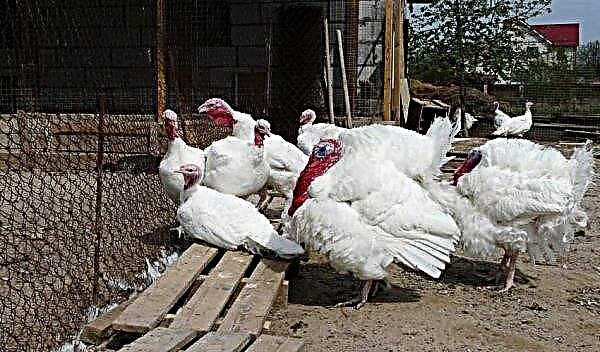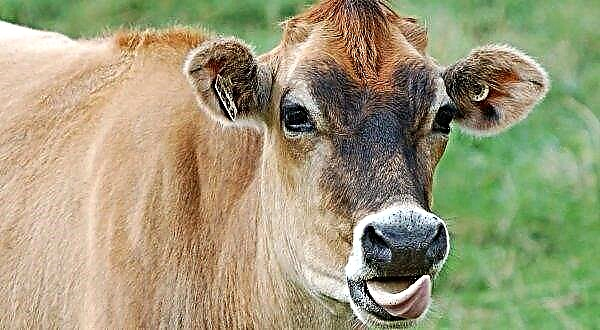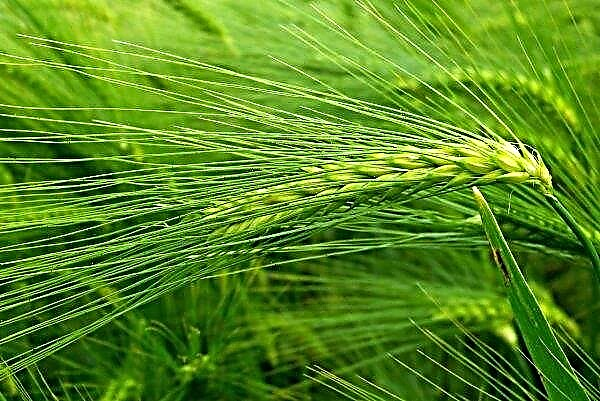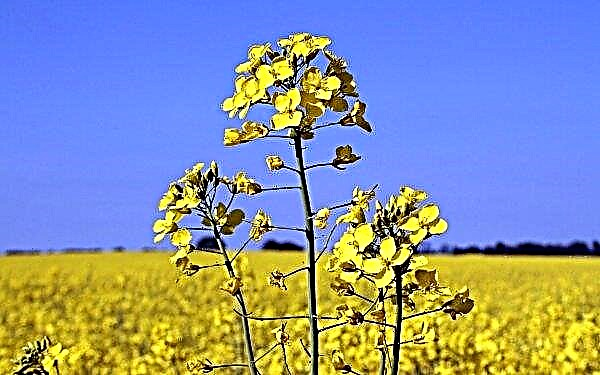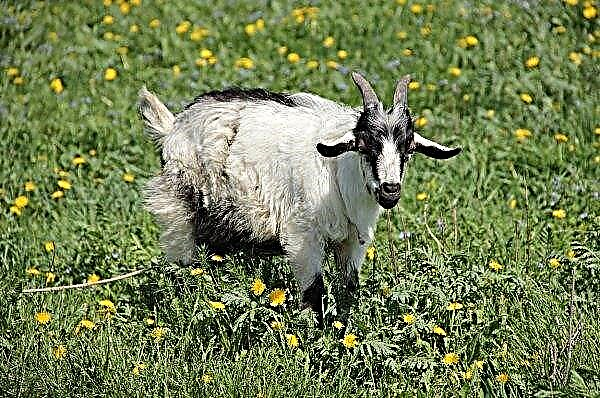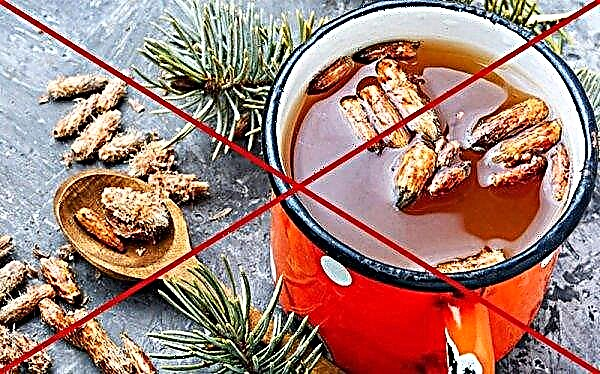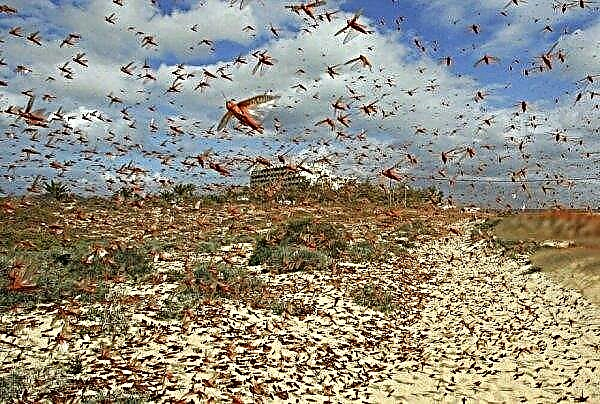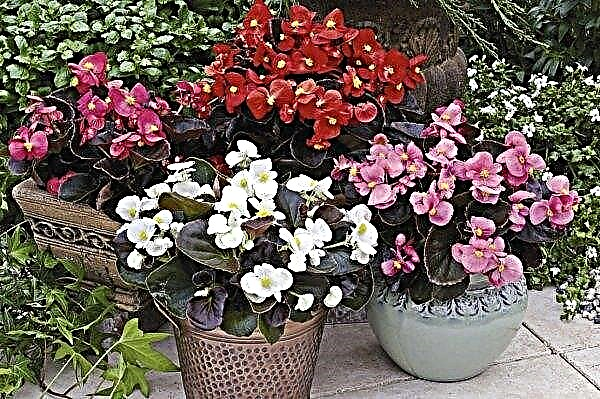Black pine, or Pinus Nigra combines many decorative coniferous evergreens, actively used in landscape design. Before you start cultivating such vegetation on your site, you should familiarize yourself with its botanical features in more detail, which will help to organize agricultural activities correctly. Also, it will not be superfluous to get acquainted with the variety of black pine varieties.
Features of black pine
Black pine is also called Austrian. In the wild, it is found mainly in the Mediterranean. Several sites are available in Algeria and Morocco. Vegetation prefers calcareous soils, less common in places of destruction of igneous rocks. It is highly resistant to drafts and drought. It can grow at an altitude of 1400-1500 m above sea level, in mountainous terrain. It develops best in open sunny areas. It can tolerate light shading. Differs in high frost resistance. Vegetation without shelter can tolerate a temperature drop of less than -40 ° C. It is suitable for cultivation in the Baltic States, Belarus, Ukraine, in the steppes of the Russian Federation, Northern Crimea and the Caucasus, Southern and Eastern Transcaucasia.
It can tolerate light shading. Differs in high frost resistance. Vegetation without shelter can tolerate a temperature drop of less than -40 ° C. It is suitable for cultivation in the Baltic States, Belarus, Ukraine, in the steppes of the Russian Federation, Northern Crimea and the Caucasus, Southern and Eastern Transcaucasia.
Did you know? Amber is a frozen resin of ancient pines.
Botanical description of black pine:
- life form - tree;
- root - rod type;
- height - 20–55 m;
- crown - pyramidal in young specimens, umbrella in old ones;
- shoots - gray-brown in color at the age of one;
- the color of the bark is black;
- needles - 8-14 cm long, dark green with a weak sheen or matte, collected in bundles of 2 pcs., at the ends of a sharp, dense structure, aligned or curved;
- cones are ovoid in shape, reach 5–7 cm in length, 2–3.5 cm in diameter, yellow-brown in color, sit on short petioles, open for the 3rd year;
- seeds are ovoid in shape, reach 4-6 mm in length, gray in color with small spots of a darker and lighter shade.
Popular black pine varieties
The species under consideration includes 2 subspecies:
- west;
- Oriental.
These subspecies include varieties described below. Most of them appeared due to painstaking selection work. They are distinguished by impeccable forms, which made the vegetation so popular among landscape designers and gardeners.
Video: a little about the varieties of black pine
Bambino
Slowly growing dwarf species. An adult plant reaches a height of 1.5 m. The crown has a spherical shape. The shoots are shortened, located close to each other. The needles are long, dark green. Bambino perfectly adapts to any drained soil. It tolerates frost and drought.
Richard
Richard is another slowly growing representative. The maximum height of an adult plant is 1.8 m. The congestion is thick. Needles up to 12 cm long are dense, sharp. The shape of the crown is narrow-columnar. Vegetation is well adapted on various types of soil, wind-resistant. It tolerates drought and frost.
Hornibrookiana
The variety is good for cultivation in climatic conditions of the middle strip. Growing slowly. In adulthood, reaches a height of 2 m.
Important! Hornibrookiana, if not properly maintained, is affected by blistering rust. To avoid the problem, it is necessary to carefully remove the foliage of currants and gooseberries from the site in the autumn period, since these plants are intermediate carriers of the disease.
The needles are light green, matte, sharp, dense. Vegetation tolerates the low temperature regime well, perfectly survives on different types of soil.
Benelux
Benelux is a small plant with a rounded crown. In adulthood, reaches a height of 1.8 m. The needles are long, green. The plant is unpretentious regarding the composition of the soil. It grows well on rocky and saline soils. But, like all varieties of black pine, it is demanding on the quality of lighting.
Globosa
Slowly growing variety with a round crown, 3 m high. The needles are dense, sharp, dark green in color. Vegetation is not demanding on environmental conditions. Well takes root in the city. Suitable for cultivation in regions with low temperature conditions.
Nana
The variety is great for cultivation in the middle lane. Resistant to fungal infections, has a high adaptive ability. Unlike other varieties, it is undemanding to the level of soil acidity.
Important! Nana is very demanding on moisture. With its lack, the tree does not develop well.
Nana is a tree with an average height of about 4 m. The crown is dense, dense, spherical.
Pyramidalis
Pyramidilis is characterized by an ovoid shape of the crown. The needles are dense, sharp, dark green in color. Adult pine reaches a height of 8 m. The variety is highly demanding on lighting.
It is able to tolerate light shading, but in the shade it is very thin. Great for cultivation in conditions of smoke and gas contamination. It grows well in arid climates.
Fastigiata
Tall tree, reaching 6 m in adulthood. It features an unusual blue-green shade of needles, which disappears with a lack of light. The crown is narrow-columnar. The vegetation tolerates frosts well, but branches can break off during heavy snowfalls. To avoid such a problem, the shoots are tied to the trunk, tightening them with wire.
Spielberg
Spielberg is the smallest representative of the plant family under consideration. Life form is a shrub. The maximum height of an adult plant is 1 m. Crohn rounded or oblong-conical. The variety is completely undemanding to the care and quality of the soil. Pot cultivation is possible.
Helga
Dwarf view of black pine with a conical crown. Its height in adulthood reaches 2 m. The bark is dark brown, almost black. The needles are thick, prickly, dull, saturated dark green in color.
Austrian
One of the most undemanding forms. It has a decorative and practical value due to the ability to grow on stony mountain slopes. It is used to contain sand in the southern steppes of Russia. Vegetation is characterized by high annual growth of branches. In adulthood, it can reach a height of 55 m. The Austrian species of black pine in Western Europe has been used in artificial forests since 1759.
Video: Austrian black pine
Other varieties
A few more decorative representatives of black pines:
- Oregon Green - a neat tree with a pyramidal or conical crown. It reaches a height of 8 to 14 m. It tolerates frosts, soil pollution, wind and drought tolerance. The decorativeness of the plant is determined by the presence of whitish buds and new shoots that differ from the bulk by a lighter shade. At a young age, the trees can suffer from sunburn, so you will have to carry out more thorough care of the plantings.

- Golden Glow - a very interesting view. The plant itself is dwarf. The height and diameter of an adult tree is 1 × 1 m. The bark is black and gray with a beautiful texture. The shape of the crown is domed. In summer, the needles have a rich green color, which in winter changes to golden. The vegetation tolerates frosts well, is not afraid of strong winds, and the branches do not break even under a thick layer of snow.

- Kokarda - a bush up to 1.5 m high with a spreading, branched crown. Just like the previous variety, it has an unusual color of needles. The needles at the base are green, and closer to the tips are yellow.

- Laurin - shrubby form, with a crown diameter of 1.5 m and a maximum height of 80 cm. Plants prefer stony soils, do not tolerate excess moisture.

- Kissen - woody form with a rounded slightly flattened crown. Unlike other representatives, it is characterized by short dark green needles. The maximum height of plants is 1 m. They develop well on alkaline and acidic soils, but do not tolerate dense soils.

- Zimmer - a tree up to 6 m high. The needles are long, up to 10 cm, sharp, dark green. It has a high adaptive ability in relation to adverse environmental conditions.

Proper fit
The considered plant type prefers well-lit areas. Given this, you should select an open area. It is also worth paying attention to the level of occurrence of groundwater. Based on the structural features of the root (rod type), the development of plants can be adversely affected by the close occurrence of groundwater. The optimal indicator is 2.5–3 m. Regarding the soil, any one will do. The main thing is that it be well-drained.
Did you know? Pine wood is used for the production of artificial silk and eco-leather.
This means that the soil must pass moisture well, allowing it to be evenly distributed without forming stagnation. Planting stock should be purchased at nurseries offering zoned plants. Seedlings aged 2 to 5 years have a higher degree of survival. Landing is carried out in the spring (mid-April - early May) or in the fall (mid-September - October). Six months before planting, the site is cultivated to a depth of 40 cm. If the soil is heavy, then 10 kg of sand is applied to each 1 m².
Step-by-step landing:
- About a month before the event, dig a hole. Its size should be 2 times the volume of the rhizome.
- Cover the bottom with a layer (15 cm) of rubble, broken brick or expanded clay. On top of it pour 10 cm of coarse river sand.
- In the central part of the pit, set the count.
- Prepare nutritious soil by mixing in equal proportions soddy soil and leaf.
- A third of the pit is filled with nutrient soil mixture, pour 20 liters of water.
- A month later, place a seedling in the center of the hole, align it with the root neck - it should be level with the soil level.
- Fill up the hole. Pine tie to the support. Seal the trunk tree and water the plant with 20 liters of water.
- After the soil has absorbed moisture, mulch the trunk circle with sawdust or needles.

Care Features
Caring for the type of plants in question is very simple.
It consists in the implementation of basic agricultural activities, namely:
- glaze;
- top dressing;
- crown formation.
Frequent moistening of pine trees is required in the first year after planting. In hot weather, they are watered 2 times a week, bringing in 5–20 l of water, depending on the height (the lower, the less moisture is needed). Trees that grow to 2.5 m should be fed 35 liters of liquid at a time. Adult specimens are watered 3-4 times throughout the season. In a temperate continental climate, plants will have enough natural rainfall, and additional moisture will be required only in a very dry period.
Important! Under the pines, it is unacceptable to make nitrogen fertilizing. This element stimulates the strong growth of young shoots, which will not mature by winter, and, accordingly, will freeze during the first frosts.
Also in the first year after planting, due attention must be paid to the soil. After watering, it must be loosened, and then mulched. Coniferous sawdust, needles, bark are used as mulch. All elements are crushed to fractions of about 0.5–1 cm in size. The layer height should be 10–15 cm. Preparations containing magnesium, phosphorus and potassium should be used as fertilizer for pines. A great option would be rotted compost or humus, which can be bought in specialized stores. In autumn, you can feed the vegetation with superphosphate. A 40 g / m² barreled circle is required. Fertilizer close up to a depth of 10 cm in the ground. In spring, you can use rotted compost, two top dressings per season are enough. Forming pruning is carried out, a year after planting. The optimal height of the plant is 1.7 m. If the tree is more overall, then due to the abundant removal of branches it can die.
In autumn, you can feed the vegetation with superphosphate. A 40 g / m² barreled circle is required. Fertilizer close up to a depth of 10 cm in the ground. In spring, you can use rotted compost, two top dressings per season are enough. Forming pruning is carried out, a year after planting. The optimal height of the plant is 1.7 m. If the tree is more overall, then due to the abundant removal of branches it can die.
When forming, dried, damaged shoots are removed. Also, if desired, stop the growth point, cutting off the top. The tips of the shoots can also be pinched, creating a shape to your liking. The main rule when pruning is not to damage the needles. This means that clipping should take place between the needles. Each wound surface must be immediately treated with wood ash and covered with garden var. Anti-aging pruning is performed every 3 years. At this stage, pinching the tips of the shoots in the autumn period is carried out. This approach allows you to stimulate the growth of side shoots in the spring. During the first 3 years after planting, the pines will need additional shelter for the winter. First of all, they make a higher layer of mulch - about 20 cm. The plant itself is covered with a spanbond on top, attaching it to the soil with metal staples. Adult pines do not need shelter.
At this stage, pinching the tips of the shoots in the autumn period is carried out. This approach allows you to stimulate the growth of side shoots in the spring. During the first 3 years after planting, the pines will need additional shelter for the winter. First of all, they make a higher layer of mulch - about 20 cm. The plant itself is covered with a spanbond on top, attaching it to the soil with metal staples. Adult pines do not need shelter.
The use of pine in landscape design
Landscaping has been using conifers for a long time as the main emphasis in many compositions. With the help of pines create rockeries and rock gardens. Such compositions involve a combination of trees with different textures and laying out of stones.
Did you know? The record holder for the length of the needles among conifers is a swamp pine, in which they reach 45 cm.
With the help of dimensional black pines, it is possible to advantageously shade buildings, fountains or create a shadow on the site. Dwarf varieties are used in hedges, the design of garden paths, zoning of the territory. Black pine is of particular interest to gardeners and landscape designers. It has high decorativeness at all stages of vegetation, takes root even in conditions of severe gas contamination, and is completely undemanding in maintenance. The focus of vegetation should be given in the first few years after planting.
Black pine is of particular interest to gardeners and landscape designers. It has high decorativeness at all stages of vegetation, takes root even in conditions of severe gas contamination, and is completely undemanding in maintenance. The focus of vegetation should be given in the first few years after planting.







